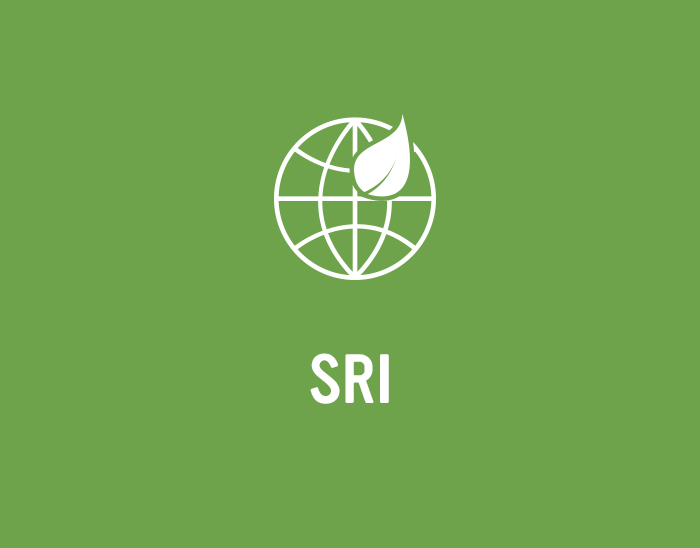
Going all the way
With €1.6 trillion (US$1.7 trillion) in assets under management, Amundi is Europe’s largest asset manager and in the top 10 worldwide by funds under management. The firm is recognised as a powerhouse in the environmental, social and governance (ESG) space and it is working toward an ambitious plan for 2021. Jean-Jacques Barbéris, head of institutional and corporate clients coverage at Amundi in Paris, outlines this plan and the strategies for how to achieve it.
A key theme in this yearbook is the evolution of the sustainable-debt market, from labelled green, social and sustainability (GSS) bonds to wider ESG assessment of borrowers. What is Amundi’s take on this?
We have shown in our research that since 2014 the integration of ESG is a source of outperformance in equities in Europe and North America.
In a sense, green bonds are an easy first step into responsible investing. The principles that govern green bonds are public, the fixed-income asset class is a familiar one and, as balance-sheet bonds, green bonds are very similar to conventional bonds.
For issuers, green bonds are an answer to a need to communicate on their ESG practices and for financing specific green segments of their overall business activities. For investors, green bonds are a useful tool to channel funds into green projects and to make it possible to measure impact.
We welcome this development because we believe that in the near future all bonds will need to be some shade of green and all finance will need to be sustainable if we are to meet the Paris Agreement goals.
Can you give some colour on Amundi’s work in the ESG space?
Our ESG track record and the expertise we have built up over the past decade have placed us as a key partner for many institutions when it comes to ESG investing.
Amundi has more than €300 billion in responsible-investment assets under management. We have built an unrivalled green-bond franchise, with €12 billion in green bonds under management and more than €3 billion in green-bond thematic strategies.
We also have key public-private partnerships with several leading development institutions worldwide to expand the green-bond market.
The first is with International Finance Corporation (IFC), for emerging markets. We launched the largest green-bond fund dedicated to emerging green bonds – the US$1.4 billion Amundi Planet Emerging Green One fund.
The second is with European Investment Bank (EIB), under the name Green Credit Continuum. We have set up a holistic programme to develop green high-yield bonds, green securitised credit and green private debt to finance the transition to a low-carbon economy in Europe more efficiently.
Third is the partnership with Asian Infrastructure Investment Bank (AIIB), where we are developing the first investment framework incorporating all dimensions of climate change as defined by the Paris Agreement. These are transition risk, physical risk and green opportunities.
For us, it has not been ‘first green bonds, now ESG’, but more ‘ESG and green bonds from the start’. When we invest in a green bond we also carry out ESG analysis at the issuer level, looking at issues ranging from corporate governance and social practices to environmental activities.
For us, green bonds and ESG analysis go together.
How far has the finance sector come in the journey toward capital allocation being realigned to meet global targets like the Paris Agreement and UN Sustainable Development Goals (SDGs)?
The first is mainstreaming ESG investing. This means 100 per cent ESG integration in all our open-ended funds, 100 per cent coverage for our ESG analysis and systematic integration of ESG into voting decisions. The latter is key because ESG is about more than selecting ESG winners and losers. It is also about accompanying investees and fostering ESG integration in their own businesses.
The second pillar is about fostering innovation, including innovative climate solutions, much like the partnerships with IFC, EIB and AIIB. It is also about moving beyond climate and integrating the social aspect of ESG. Indeed, we believe a successful transition to low carbon must be just and fair if it is to be successful.
The third pillar is to accompany and advise investors, to share knowledge and best practices and to continue contributing to thought leadership.
Amundi has been an ESG pioneer from the start, and this continues to define our strategy today.
Looking to the future, will there continue to be a role for labelled GSS bonds even as the mainstream debt market gains better understanding and incorporation of ESG risk?
ESG investing has many different drivers; there is no one-size-fits-all. Green bonds may be an attractive solution for investors seeking more direct exposure to green activities, while other investors may have more of a broad risk approach and seek ESG integration without specific GSS bond exposure. Green bonds are also a great engagement tool for investors, to enable them to discuss green practices and green activities within issuers as well as to obtain more transparency and data on impact indicators.
This does not mean the green-bond market is static. Here I would mention three things. For one, we believe some responsible investors will become pickier in their green-bond analysis, with stricter guidelines on eligible projects, acceptable use of proceeds – for instance, limiting working capital – and reporting and transparency.
Second, if we are to finance the energy transition and bridge investment gaps effectively, we need to expand green debt markets beyond their current state of development, in which they are mainly centred on large, investment-grade issuers.
In this regard, Amundi has identified three major frontiers. There is a geographic frontier: we need to bring climate financing to emerging markets, where climate change is even more acute than in developed markets. There is an issuer frontier: channelling funds to new types of actors, in the public sphere – such as cities and local governments – and in the private sector, beyond the usual suspects, which are large utilities and energy companies. Finally, there is an instrument frontier: from developing private debt, securitised credit and other segments of the debt market. This will enable us to channel funding to individuals, small-scale projects and activities that are highly impactful.
The third aspect of evolution in the green-bond market is the growing range of labels of bonds emerging: green, social, sustainable, blue, transition and sustainability-linked, to mention a few. We believe there will be increasing need for clarity and transparency for investors and issuers.
Is the final state the existence of a niche ‘dark-green’ market of ethical investment alongside a mainstream that is exclusively ‘light green’ – ie that understands and appropriately evaluates ESG risk without having specific ethical mandates?
A word of warning, though. Definitions of what is green and how green it is will probably vary from one region and one sector to the next. The key is making sure investors get more information, and of higher quality, on what they are financing, with more explicit impact reporting. This does not mean we should only finance dark-green activities. It means we need to have a better understanding of what exactly it is we are financing.
“There is a definite need to integrate climate risks into portfolios, including bond portfolios. In fact, there is a need to integrate all dimensions of the Paris Agreement to be more resilient.”
One of the main developments in the GSS bond market in 2019 was the delivery of the EU taxonomy. What does this mean for a large, sophisticated investor like Amundi? Is Amundi using the taxonomy as a basis for reporting or as a performance benchmark for its investments?
The taxonomy will bring much-needed clarity on what we can consider green and what we cannot. As such, it should generate interesting discussions on the types of impact-reporting indicators we should seek out from issuers when financing their green projects.
It is important for us that this taxonomy is enacted in a an environment that seeks to support and accelerate sustainable finance, including the elaboration of the EU’s own green bond principles, the Green New Deal of the European Commission (EC), so as to stoke public investment and also regulation – especially in the crucial field of carbon pricing.
The taxonomy is not finalised yet so we don’t have complete visibility on what its final output will be. However, we have started to implement its philosophy, notably in the Green Credit Continuum programme which we launched in partnership with EIB. It is a direct answer to the Green New Deal of the EC: channelling financing to segments of the green-bond market that are still underdeveloped – high-yield bonds, private debt and securitised credit. All investments will need to contribute in one way or another to the EU’s environmental objectives.
We are also using our own ESG tools and in-house green-bond analysis.
We have seen ESG investors developing their own taxonomies and guidelines. How does Amundi assess the ESG performance of its investments outside the labelled GSS universe – where second-party verification and impact reporting are par for the course?
We have a proprietary ESG analysis and rating methodology. In stylised terms, the methodology can be broken down into three steps. First, we define a set of criteria per sector for each of the E, S and G pillars. We weigh these criteria based on each sector and assess the quality of data providers for each.
We then combine these criteria as well as weights and inputs from data providers to compute an ESG score, which is updated monthly and is followed by ESG analysts.
Third, we hold regular meetings with the companies, industry experts and relevant stakeholders – such as NGOs – to provide qualitative input to the ESG score.
We currently cover more than 8,000 issuers as well as the main equity and fixed-income indices. Our ambition is to increase this coverage extensively.
We also implement an engagement policy to foster better ESG practices, through ongoing engagement, voting and dialogue. In 2018, we voted in nearly 3,000 AGMs.
Finally, we take part in numerous collective initiatives, such as the UN Principles for Responsible Investment, Climate Bonds Initiative, the Green Bond Principles, the Task Force on Climate-related Financial Disclosures and the One Planet Sovereign Wealth Fund Working Group.
What types of ESG reporting does Amundi provide to its clients?
Climate risk is now more proximate than ever. Should bond investors be confronting the reality of material climate impact on investments in the lifetime of current exposures? Where are the main risks – by sector or jurisdiction?
The first is physical risk – focusing on issuers and activities aligned with climate-change adaptation efforts. Then there is transition risk, when we talk of regulation, changing consumer habits and so on, which focuses on issuers and activities aligned with climate-change mitigation. Finally comes green opportunities – supporting innovative actors making headway in low-carbon activities.
With AIIB, we are devising the first investment framework that incorporates all three dimensions. It defines three types of issuers: those that perform poorly on these dimensions are excluded, those that are moving in the right direction are eligible and targeted for engagement, while those that outperform for all variables are also eligible.
By targeting these issuers, our investment strategy becomes more resilient to climate-change-related risks but also more exposed to opportunities not necessarily priced in the market.
What is the next phase of evolution for sustainable debt globally? What should we look for in 2020?

WOMEN IN CAPITAL MARKETS Yearbook 2023
KangaNews's annual yearbook amplifying female voices in the Australian capital market.









